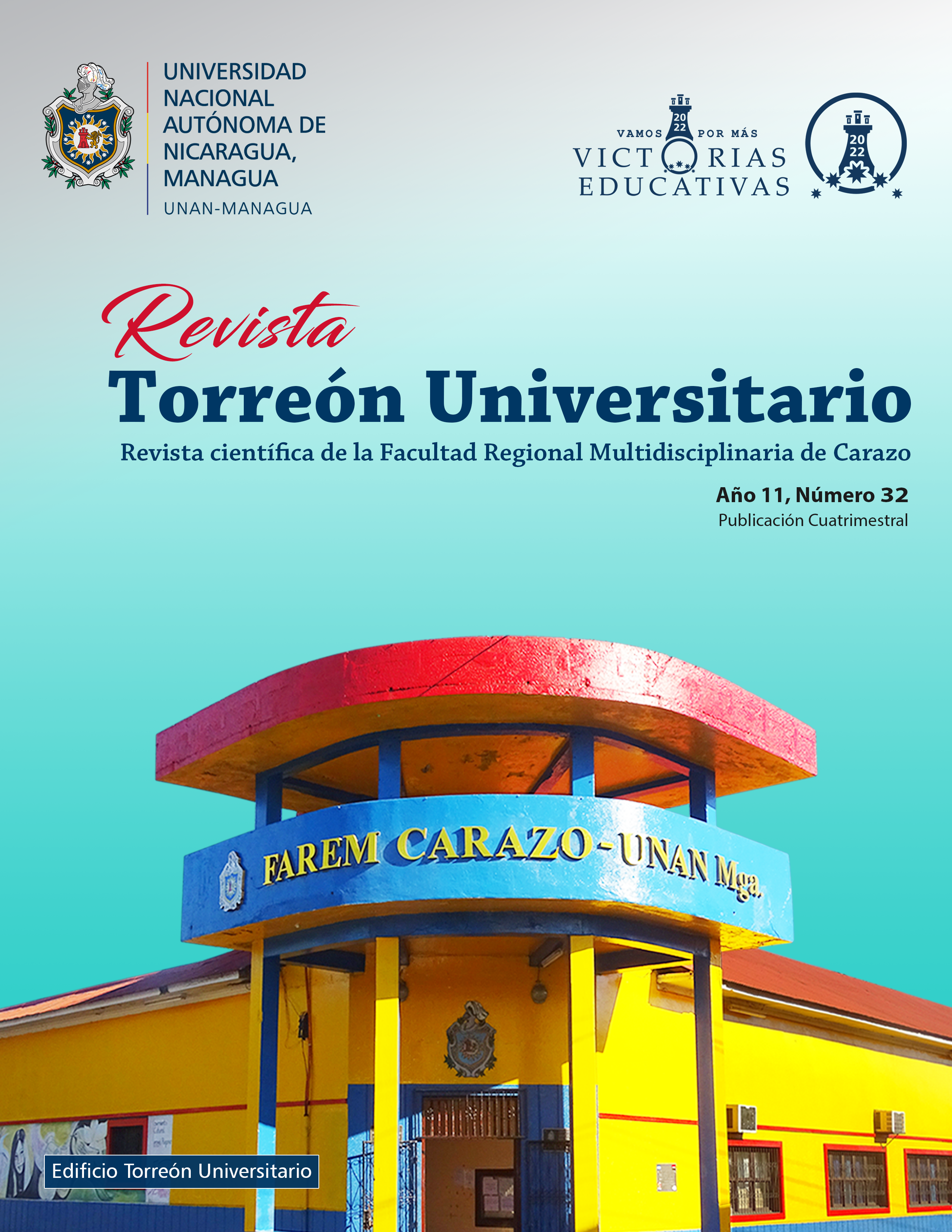Aislamiento y caracterización del hongo Moniliopthora roreri (Cif) H.C. Evans, Stalpers, Samson & Benny. (1978). de frutos de Theobroma cacao L.
DOI:
https://doi.org/10.5377/rtu.v11i32.14980Palabras clave:
Aislamiento, Esporas, MorfologíaResumen
El presente ensayo científico se realizó con el objetivo de aislar y caracterizar el hongo Moniliophthora roreri (cif) H.C.Evans,Stalpers,Samson & Benny.(1978) fitopatógeno que provoca grandes pérdidas económicas al propagarse en frutos de Theobroma cacao L. la toma de muestras se llevó a cabo en la finca el Mango ubicada 11°10´02°N 84°25´53°W en el municipio del Castillo departamento de Rio San Juan, propiedad del Sr. José Leonel Gómez Álvarez; Para el aislamiento del hongo Moniliophthora roreri (cif) H.C.Evans,Stalpers,Samson & Benny.(1978) se colectaron 9 muestras de cacao que presentaban síntomas de moniliasis y caracterizó macroscópica y microscópicamente.
Descargas
Referencias
Contreras, L. Y. (2006). Aislamiento e identificación de Moniliophthora roreri. Revista Respuestas - Universidad Francisco de Paula Santander , 6.
Oporta, E. (10 de Mayo de 2020). 19 Digital. Obtenido de 19 Digita: https://www.el19digital.com/articulos/ver/titulo:115849-nicaragua-produccionnacional-
Rodríguez, J. H. (2015). Conceptos básicos en la produccion moderna del cacao. Managua: INTA.
Publicado
Número
Sección
Licencia
Derechos de autor 2022 Universidad Nacional Autónoma de Nicaragua, Managua

Esta obra está bajo una licencia internacional Creative Commons Atribución-NoComercial-SinDerivadas 4.0.
The authors who publish in this journal agree to the following terms.
- The author or authors of the articles, essays or research grant the National Autonomous University of Nicaragua, Managua (UNAN-Managua) the editing rights (copyright) of the submitted work, therefore the University has the exclusive right to publish the article for the entire copyright period.
- These copyrights/authors authorize Torreón Universitario Magazine and the University to edit and disseminate/publish the article in said Magazine, including printed and electronic reproduction, storage, retrieval and any other type of publication, and sources of secondary information as services. of summaries and databases, they also empower it to protect the article against unauthorized use for dissemination by printed or electronic media (PDF, HTML, EPUB, XML or others).
License for use of content
The magazine uses the Creative Commons Attribution-NonCommercial-NoDerivs 4.0 International License.
Under this statement:

This journal is licensed under a Creative Commons Attribution-NonCommercial-NoDerivatives 4.0 International License. It can be copied, distributed and transmitted publicly as long as the author and source are cited (Revista Torreón Universitario), it should not be modified or used for any commercial purpose. The full license can be found at http://creativecommons.org/licenses/by-nc-nd/4.0/.



